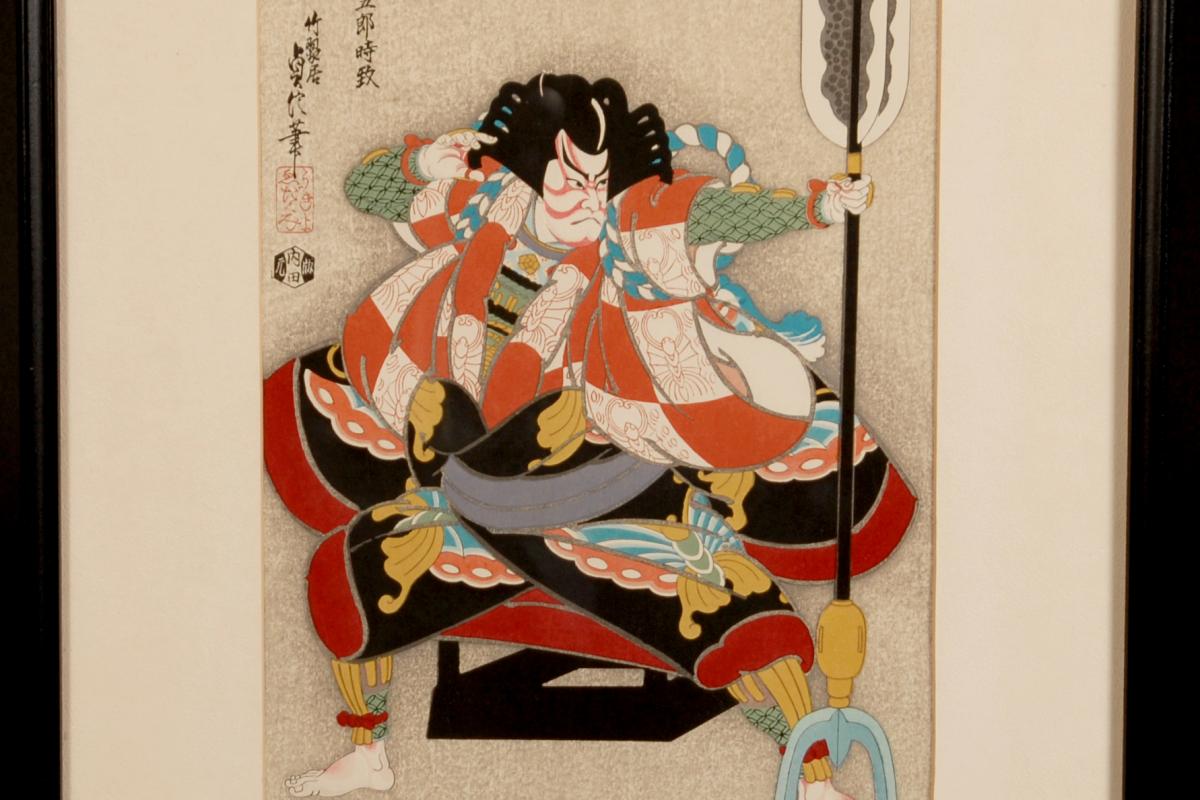March 3 – April 23
Silent auction March 29 – April 1
First Friday reception April 1: Taiko/Koto concert 6:30 p.m.
For the first time this spring, the Art Center will exhibit over 50 Japanese works of art from its permanent collection. The works belonged to local couple Mai Nagatomo and Bill Robinson. Robinson left the entire collection to the Art Center upon his passing in March 2015. It features Japanese ceramics, painting, imperial court masks and several textiles. The First Friday reception will be a celebration of Japanese art and culture, beginning with a concert by Denver ensemble Taiko with Toni. The performance will feature Taiko drumming as well as the Koto, a Japanese string instrument. Following will be refreshments and a tour of the collection with the Art Center’s Curator for anyone who is interested. During the week there will be a silent auction at the Art Center of Japanese gift items and antiques, many of which also belonged to Bill Robinson but were not part of his art collection. All proceeds will go toward the care and preservation of the Art Center’s permanent collection.
The Robinson collection also includes 27 woodblock prints, most of which date from Japan’s Edo (1615-1868) and Meiji (1868-1912) periods. The prints are incredibly detailed and depict lavish interiors, popular kimono patterns, scenes from the pleasure districts of burgeoning cities, and even famous male kabuki actors in drag (women were not allowed to act). This genre of Japanese Art is called ukiyo-e, which literally translates to “pictures of the floating world,” signifying the ungrounded, extravagant lifestyle that had become prevalent among Japan’s growing merchant class. The medium of woodblock printmaking is itself an asset to the permanent collection. In 17th-19th century Japan it enabled ukiyo-e artists to compose in bright colors and bold yet delicate lines. With few gradients, the colors provide some abstraction to the compositions, while the confident lines are for the most part naturalistic. The faces depicted range from expressionless to extremely expressive, depending on the time period they were designed.
While most of the artworks are Japanese, the origin of several remains a mystery. For instance, seven large pastel drawings, also from the Robinson estate, which are believed to be Tibetan. Research for these items is still underway.
The Robinson Collection is like nothing else in the Art Center’s permanent collection. Being from a Colorado collector it met the WCCA’s acquisition criteria. Though the works of art were made in Japan centuries ago, Colorado has a deep Japanese American history from the 20th century. The Granada War Relocation Center in Granada, Colorado, also known as Camp Amache, was one of 10 internment camps established during World War II. During this dark period of United States history, between 1942 and 1945 over 110,000 American citizens of Japanese ancestry were forced to move from their homes to internment camps in remote areas. Ralph Carr, Colorado’s 29th governor (1939-1943), was the only elected official in the U.S. to publicly defend the rights of Japanese Americans.
Special thanks to Martin Stidham, Charlie Hardy, Chihiro Schwartz, Lillie Poush, Sarah Ferrieri, Haley Van Camp, Alyssa Campbell, Becca Seal, Nepal Restaurant, Kari-Shepherdson Scott, Dylan Jekels, Hiroko Johnson, Toni Yagami, Miwa Steuben, Claudine Locascio, and the Japan America Society of Colorado.

